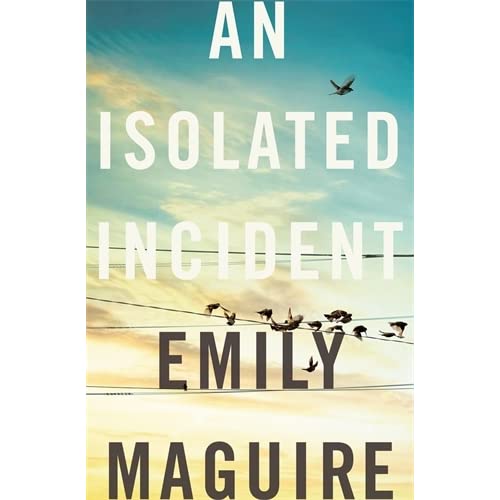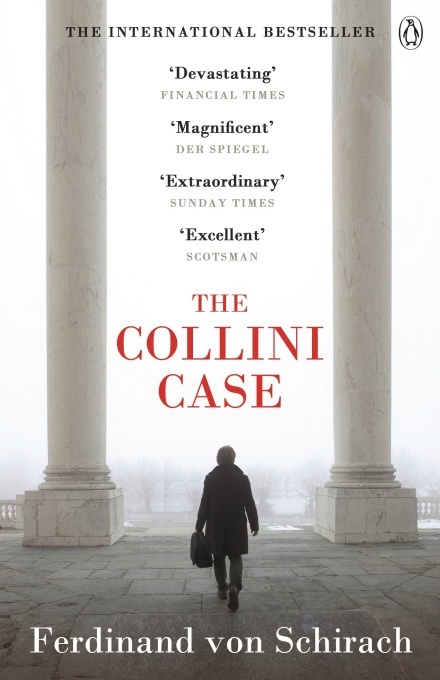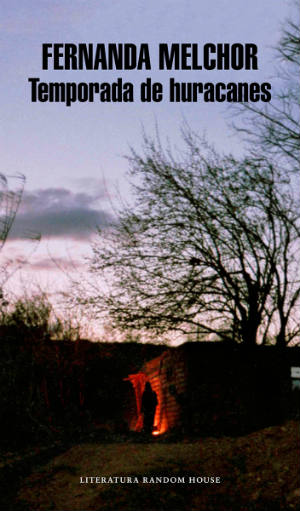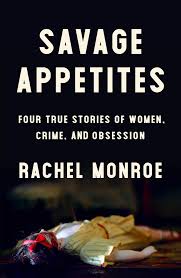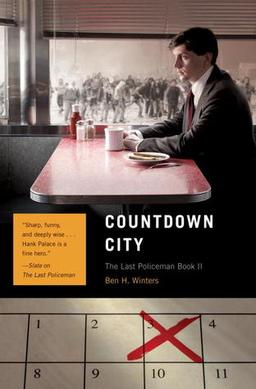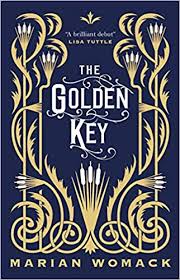Well, here we are at the start of Week 7 of lockdown and with no end in sight. Following the unveiling of Boris’s so-called ‘roadmap’ yesterday evening, here in Scotland the message is still very much Stay at Home, which if you’re living on an island means travel to the mainland continues to be prohibited except for emergencies. In practice and especially considering the circumstances, this is no great hardship for Chris and me: we have everything we need right here in Rothesay,, and with both of us working on new novels, we have more than enough to keep us occupied on a day-to-day basis. The relaxation of the ‘once a day’ exercise rule has come as very welcome news – as the weather improves I have been itching to get outside more, and as social distancing is relatively easy to maintain here that’s a double bonus.
I’m also very lucky in being able to maintain a strong sense of purpose and both intellectual and emotional solace by focusing on work. (I know many writers and artists have not been finding it at all easy to concentrate right now and my thoughts are with them.) That is not to say that my work-in-progress has been unaffected by the current crisis. Quite the opposite. As is normal for me, the new manuscript had already been through a number of massive rethinks and structural changes. But as the corona crisis took hold, the book as I began writing it back in September became increasingly to seem like an impossible thing, and a week or so ago I realised I had reached an impasse.
With some misgivings but a sense of inevitability and rightness I have started writing the novel again, from the beginning. This feels scary – the manuscript at present is less manuscript, more ragbag of dissociated passages that I am simply having to assume will coalesce at some point in the future. But it also feels necessary, a small reflection of what is happening across the world and my own best response to it. Ironically, the book at the moment feels closer to how I originally conceived of it – closer to its source material – than it did over the winter, which cannot be a bad thing. I guess we’ll find out.
And of course, with lockdown measures still firmly in place in Scotland, I still have no idea when my mother and I will be able to resume our Morse Suppers. We’re talking on the phone a lot but – as all of you will know all too well – that just isn’t the same. So onward with Corona Crime Spree. And perhaps it’s no surprise at this stage in the lockdown that this one turned out to be a bit of a rant!
Swan Song by Edmund Crispin (1947)
I have never been the biggest fan of Midsomer Murders, and every time I pick up a novel of the Golden Age, I am simultaneously reminded of everything that makes classic detective fiction so entertaining and so popular, and all the reasons why it can be so irritatingly facile. There are authors whose work in this genre rewards the time spent with it because of their literary intelligence, their personal engagement with the material and their skill in subverting the cliches. There are others whose flippancy, whose attachment to the more reprehensible attitudes of their time and whose general irksomeness gets in the way of one’s enjoyment. I am sorry to say that Swan Song annoyed me far more than it engaged me.
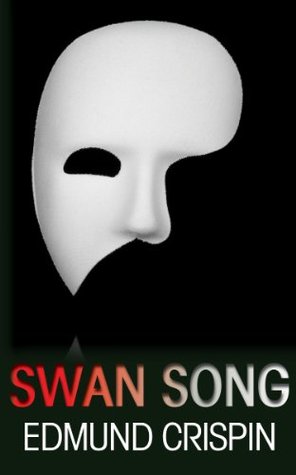
We are in Oxford, at the start of rehearsals for one of the first post-war performances of Wagner’s Die Meistersinger. The star of the show, Edwin Shorthouse, is making life a misery for the whole company with his monstrous egotism, his general high-handedness and his sexual harassment of female members of the company. Amidst the rising tension, there are three people in particular who would benefit from Shorthouse’s death: the conductor, Peacock, who is being driven almost literally mad by Shorthouse’s deliberate provocations, Judith, one of the younger singers who Shorthouse attempts to rape, and Charles, Edwin’s brother, a composer who stands to inherit his sizeable fortune.
When Edwin is discovered hanged in his dressing room just a week before the first performance, the police are keen to record a judgement of suicide. No one particularly cares that the man is dead and suicide means less paperwork than murder. But Gervase Fen, scholar, detective and opera fan, is not convinced. As Fen begins his investigation, he fears that other members of the company could still be in danger.
At this point in my discussion of a crime novel I might normally attempt an analysis of the characters – their personalities, interests and motivations – yet in the case of Swan Song I cannot bring myself to do so because it would be pointless. To quote the American critic Edmund Wilson in his (in)famous essay of 1945, ‘Who Cares Who Killed Roger Ackroyd‘, ‘how can you care who committed a murder which has never really been made to take place, because the writer hasn’t any ability of even the most ordinary kind to persuade you to see it or feel it?’
In the piece that preceded WCWKRA (and that directly precipitated it), ‘Why Do People Read Detective Stories‘, Wilson contends that the central problem of Golden Age fiction is one of sketchy characterisation:
You cannot read such a book, you run through it to see the problem worked out; and you cannot become interested in the characters, because they never can be allowed an existence of their own even in a flat two dimensions but have always to be contrived so that they can seem either reliable or sinister,, depending on which quarter, at the moment, is to be baited for the reader’s suspicion.
What Wilson is saying in his essay can be summed up as follows: in order for a story to be effective, we have to care about the outcome. What we care about may vary from reader to reader, but something must be at stake. The overriding problem for me with Swan Song is that I didn’t care about any of it. I didn’t care about the victim because he is portrayed as an egotistical wanker with no redeeming qualities apart from his voice, which I didn’t care about either because the narrative doesn’t give any true sense of his quality as a performer. I didn’t care about any of the suspects (or which of them was guilty) because they are about as realistic as the counters in a game of Cluedo. Nor did I care about the puzzle itself, the detective mystery, firstly because Shorthouse’s murder could never have happened in the way Crispin describes (as a method for murder, ridiculous doesn’t even begin to cover it) and secondly because when set against the possibility of being hanged, the various motives Crispin suggests for the crime are unconvincing. Or rather, the characters are so poorly portrayed we don’t believe in their stories.
During the course of my reading of and around crime fiction, I had seen and heard Wilson’s thoughts referenced multiple times without ever having read the essays themselves. Having finally set that to rights, I can report the experience outshone that of reading Swan Song by a considerable margin. In his slaughtering of sacred cows, Wilson is brutal, provocative and just plain bloodthirsty. I especially enjoyed his description of the letters that poured in after his first essay was published, castigating him for his snobbishness and ignorance and insisting that his problem with detective fiction was simply down to the fact that he hadn’t read the right books, an argument so reminiscent of literally every online spat about science fiction versus ‘the mainstream’ it is difficult to believe that Wilson’s essays were written eighty years ago.
I don’t agree with every word Wilson says, but that doesn’t matter to me because the quality of his argument is so wonderfully entertaining. What reading his essays also highlights is that although they are often referred to, they are seldom discussed in the round. Wilson admires Chandler, for example, and it is not the crime narrative – the suitability of crime as a subject for literature – that he is castigating so much as the vast swathes of generic detective novels that do not even attempt a proper investigation of their subject matter. ‘The murder story that exploits psychological horror is an entirely different matter,’ Wilson says, further insisting that ‘Dickens invested his plots with a social and moral significance that made the final solution of the mystery a revelatory symbol of something that the author wanted seriously to say.’
Such a contention would seem self evident, yet it is important that Wilson makes it, as it raises his essay above the level of rant to that of an argument that is not only seriously intended, but also reminds us of what good crime fiction can do and why readers and writers are still drawn to it as a vehicle for the communication of complex ideas.
One of the chief complaints levelled at Golden Age detective fiction by non-believers – and one that is not levelled often enough by its fans – is how problematic it can be in terms of the sexism, racism and class prejudice that runs through the entire canon like a fatal hairline crack through a porcelain vase. Of course this is an accusation that could reasonably be brought against anything written in the pre-war era – there are shitty attitudes aplenty in D. H. Lawrence, never mind H. P. Lovecraft. But the rampant classism in Golden Age novels seems to be less an embarrassing side issue than hardwired into its structure – all those rude mechanicals with their patronisingly conveyed vocal mannerisms, their comical tendency to miss the point, their universal deference to their elders and betters. Throughout my explorations of Golden Age fiction to date, I have found the classism almost more unbearable than the sexism, because there’s a sense that these assumptions were so deeply embedded in society even the writer is unaware of how poisonous they are.
But if it’s sexism you’re after, there’s a typically generous helping of it in Swan Song. How about this:
‘Isn’t the girl something to do with Shorthouse?’
‘As to that,’ said Joan rather definitely, ‘I couldn’t say. If so, I’m sorry for her. She’s a pretty child.’
‘Chorus?’
‘Yes. One of the boatload of maidens. It’s she who dances with David.’
‘Oh yes, so it is.’ Adam considered. ‘I felt sure I’d seen her with Shorthouse. But she looks very much attached to that young man.’
‘Promiscuous, probably,’ said Barfield, dropping cake crumbs on to his knee.
Or this:
‘I mean, reputedly he lives in sin with a woman called Beatrix Thorn. She is not attractive,’ Adam added unchivalrously. ‘She is not attractive at all. But composers have a way of getting hold of the most appalling women. I can never quite see why it is. Look at the Princess Wittgenstein. Look at Mlle Reccio. Look at Cosima. Look at -‘
‘All right,’ said Fen. ‘I accept the general proposition.’
And of course this old chestnut:
Physically [the dressing room] resembled that in which Edwin Shorthouse had met his end, but its atmosphere was entirely different, and Fen marvelled anew at the relative sensitivity of the sexes to their immediate surroundings. The difference appeared to be – he became momentarily abstracted and analytical – in the feminine predilection for profusion and colour.
And one more for good measure:
‘I realised even then that I was the first Salome to give the males in the audience a really good run for their money during the Dance of the Seven Veils, It was at the Paris Opera, and I ended up in a condition of nudity that would have made the Windmill girls blush.’
One of the reasons I wanted to try reading Crispin was because I was intrigued by his background. His real name was Bruce Montgomery, and he was close friends with writers such as Kingsley Amis, Philip Larkin and Brian Aldiss. He always counted music as his primary creative activity, and composed a number of well known film scores, most famously the music for the Carry On films. I felt certain that he would have an interesting approach to the detective novel and in some respects I was right. I enjoyed the Oxford backdrop, which gives the novel a firm sense of place, convincingly described. Swan Song is full of energy and displays a degree of wit, even if the author is too obviously in love with his own cleverness and cultural awareness. What should have sounded a warning bell, perhaps, was the very background I found myself attracted to: cliquey Oxford pubs, College loudmouths guzzling beer and taking the piss out of each other and groping the bar staff. Kingsley Amis and Philip Larkin are brilliant and important writers but they are both notorious misogynists. It’s all too easy to imagine the kind of ‘locker room talk’ these chums went in for.
Another reason for my attraction to Swan Song was the theme of music. I have a complicated relationship with Wagner but I know his operas well, and I’d heard that Crispin’s insights into the composer and his work raised this novel to a higher level than others in the Gervase Fen series. Boy was I disappointed. Crispin certainly knows his Wagner, but his decision to set the action around a production of Meistersinger turns out to be a massive excuse for name-dropping. The text abounds in references to famous singers and conductors of the era (yep, Ed, got ’em all) yet there is no attempt whatsoever to introduce the uninitiated reader into the weird and wonderful emotional and political labyrinth that is Wagnerian opera. We’re barely told what Meistersinger is about, let alone who the characters are (casual allusions to Sachs and Beckmesser are just further unneeded examples of authorial arrogance).
There is some discussion of the relationship between Wagner and Nazism and the significance of Wagner’s return to the repertoire after World War Two, but it is all very perfunctory and by-the-numbers, and you probably won’t be surprised to hear that Crispin’s own portrayal of Jewish people is far from ideal. Most importantly, anyone coming to Swan Song never having listened to Wagner before would undoubtedly go away with little to no idea of what his music sounds like, why it is important, Wagner’s role in the development of Western music. Given that Crispin is at such pains to convince us of his musicological expertise, this seems a stunning omission.
I am passionately in favour of novels in which authors share their enthusiasms, in which they make them part of the fabric of their writing. But in order for such a work to be successful, the writer must take pains to communicate their passion directly to the reader. Swan Song is sadly lacking in this respect. The great Wagnerian detective novel has still to be written.
Fiction is fiction, and the choice of subject matter should be free for all, whether reader or writer. The subject of murder though is a serious business, and – as Edmund Wilson reminds us – it tends to be most effective when treated with respect. The forms this respect might take are many and varied: depth of characterisation, sense of place, moral complexity, social or political commentary, psychology, forensic examination of a crime scene or court case, even the intricate and painstaking construction of a clever puzzle. All are valid approaches, and the one that appeals most to one reader may be less interesting for another. But there must be something.
I can understand how some readers might enjoy Crispin for precisely those qualities that bug me: his sense of humour, his studied insouciance, his preferring not to. But for me, reading Swan Song has served only to confirm what I already knew: that the crime writers I most admire are those whose fiction is a genuine expression of their interests and concerns. Swan Song reads like a bagatelle, a bit of a laff. I have Midsomer Murders for that, if I’m in the mood. But when it comes to novels I’d much rather spend my time with authors who dare to set the stakes a little higher.
